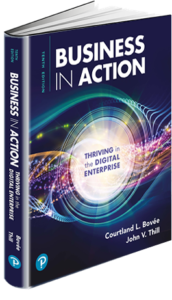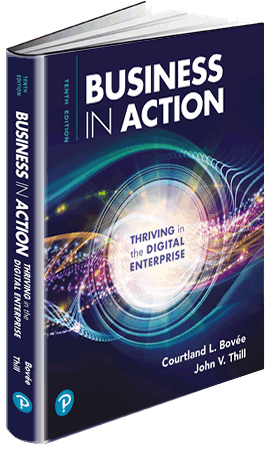
Cultivate resilient students by fostering a growth mindset that turns obstacles into learning opportunities.
In the fast-paced world of business, success often hinges on one's ability to learn from setbacks and persevere through challenges. Yet, many Introduction to Business students enter their courses with a mindset that views failure as a dead end rather than a detour on the road to success. How can educators reshape this perspective and cultivate resilient, innovative thinkers? The answer lies in fostering a growth mindset–a powerful tool that transforms obstacles into opportunities and revolutionizes methods of teaching Introduction to Business.
The Paradigm Shift: From Fear to Fearlessness in Introduction to Business Instruction
Imagine a classroom where every mistake is celebrated as a stepping stone to greater understanding. Where Introduction to Business students approach complex problems with enthusiasm rather than trepidation. This is the reality in many innovative Introduction to Business courses across the country.
Educators have noticed how discouraged students can become when they don't immediately grasp a concept or succeed in a project. This realization has led to a fundamental shift in how we approach learning and failure in Introduction to Business instruction.
The solution? A comprehensive strategy to reframe failure as an integral part of the learning process. This approach has not only improved student engagement but has also better prepared Introduction to Business students for the realities of the business world.
Building a Culture of Growth: Strategies for Successful Introduction to Business Instruction
Creating a growth mindset culture doesn't happen overnight, but with consistent effort and the right strategies, it can transform your Introduction to Business classroom. Here are some key approaches that have proven successful:
1. Start with a Bang: Begin the semester by dispelling the myth of overnight success. Share stories of business titans who faced significant setbacks– like J.K. Rowling's multiple rejections or Steve Jobs' infamous firing from Apple. These narratives set the stage for viewing failure as a normal part of any successful journey, a crucial lesson for Introduction to Business students.
2. Reflect and Grow: Introduce "Failure Reflection Journals" as a tool for Introduction to Business students to process their experiences. After challenging assignments, prompt students to consider what they aimed to achieve, what didn't go as planned, and how they'll approach similar situations in the future. This practice helps students internalize the lessons hidden within their setbacks.

Bring real-world resilience to class with guest speakers, showing students how to overcome business challenges.
3. Real-World Resilience: Bring the outside world into your Introduction to Business classroom. Invite guest speakers who have overcome significant obstacles in their business journeys. Their firsthand accounts provide tangible examples of how resilience and adaptability lead to success, inspiring students to persevere through their own challenges.
4. Simulate and Stimulate: Design immersive activities that allow Introduction to Business students to experience simulated business failures in a controlled environment. These exercises help develop problem-solving skills and teach students to learn from mistakes without real-world consequences.
5. Language Matters: Encourage a shift in how Introduction to Business students talk about their experiences. Replace phrases like "I failed" with "I'm learning" or "I'm iterating." This subtle change in language can have a profound impact on students' mindsets and self-perception.
Measuring Growth: Beyond Grades in Introduction to Business Courses
To truly embrace a growth mindset culture, assessment practices in Introduction to Business instruction must evolve. Many educators have implemented a multi-faceted approach to evaluating student progress:
• Progress Tracking: Implement portfolios or digital badging systems that showcase growth over time, not just final outcomes.
• Peer-to-Peer Learning: Encourage Introduction to Business students to provide constructive feedback to their peers, fostering a collaborative learning environment.
• Alumni Insights: Collect feedback from graduates who have applied growth mindset principles in their careers. Their stories serve as powerful motivators for current Introduction to Business students.
The Ripple Effect: Beyond the Introduction to Business Classroom
The impact of fostering a growth mindset extends far beyond the walls of the Introduction to Business classroom. As students internalize these principles, they carry them into internships, jobs, and eventually, their own ventures.
Introduction to Business instruction is not just about teaching business concepts. It's about equipping students with the resilience and adaptability they need to thrive in an ever-changing business landscape.
By reframing failure as a launchpad for growth, educators can transform their Introduction to Business courses into incubators for the next generation of innovative, resilient business leaders. In doing so, they prepare students not just for success in their studies, but for the inevitable ups and downs of their future careers.
As the business world continues to evolve at a breakneck pace, one thing remains constant: those who view challenges as opportunities to learn and grow will always have an edge. By embracing this mindset in Introduction to Business education, we're not just teaching business – we're cultivating the entrepreneurs, innovators, and leaders of tomorrow.
 The Growth Mindset Revolution: Business in Action for Teaching Introduction to Business
The Growth Mindset Revolution: Business in Action for Teaching Introduction to Business
For instructors embracing a growth mindset approach in their methods of teaching Introduction to Business, Business in Action stands out as the ideal textbook companion. This comprehensive resource aligns perfectly with the goal of fostering resilience, adaptability, and a love for continuous learning among Introduction to Business students.
Business in Action excels in providing real-world examples and case studies that illustrate how successful business leaders have overcome failures and turned setbacks into opportunities. These narratives reinforce the growth mindset philosophy, showing students that challenges are stepping stones to success in the business world, a crucial aspect of effective Introduction to Business instruction.
The textbook's interactive features and hands-on activities seamlessly integrate with the "learning through doing" approach crucial for developing a growth mindset in Introduction to Business students. Its problem-solving scenarios and decision-making exercises allow students to practice resilience and adaptability in a low-stakes environment, mirroring the "Simulate and Stimulate" strategy discussed in growth mindset pedagogy for teaching Introduction to Business.
Business in Action is fully integrated with MyLab for Introduction to Business by Pearson. This powerful online learning platform complements the textbook by offering personalized study paths, interactive simulations, and adaptive assessments. These features align perfectly with the progress tracking and peer-to-peer learning strategies essential for fostering a growth mindset in Introduction to Business courses.
The combination of Business in Action and MyLab provides instructors with a robust toolkit to implement growth mindset principles in their methods of teaching Introduction to Business. By adopting these resources, educators can create a dynamic learning environment that not only teaches business concepts but also equips Introduction to Business students with the resilience and adaptability needed to thrive in today's rapidly changing business environment.
 Business in Action, 10th Edition
Business in Action, 10th Edition